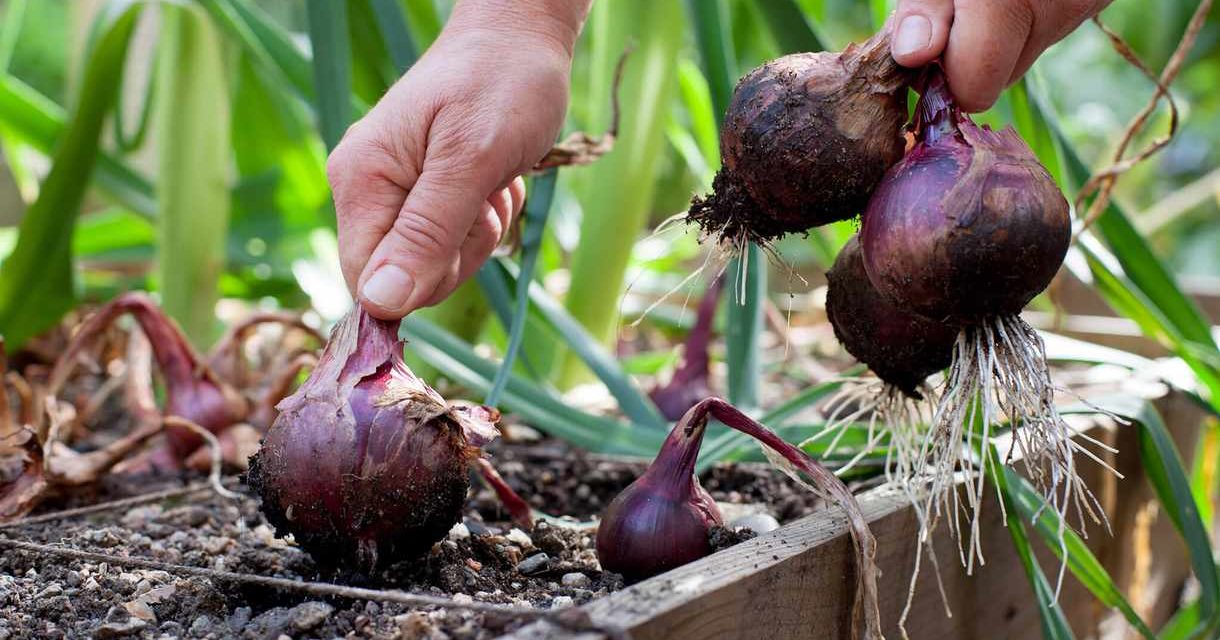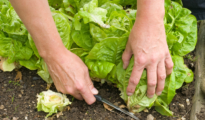Onions are a must have in any kitchen. These versatile vegetables are not only seen as a necessity by many cooks, but they're also incredibly easy to grow! Keep reading to learn how to plant onions in your garden. There are many different onion varieties and they all come in different sizes and colors. So whether you plant to plant red onions, yellow onions, or Spanish onions, the directions are all the same. And, don't forget that you can also pull onions while they're young and enjoy some fresh green onions!
How to Plant Onions – Transplants, Sets, or Seeds?
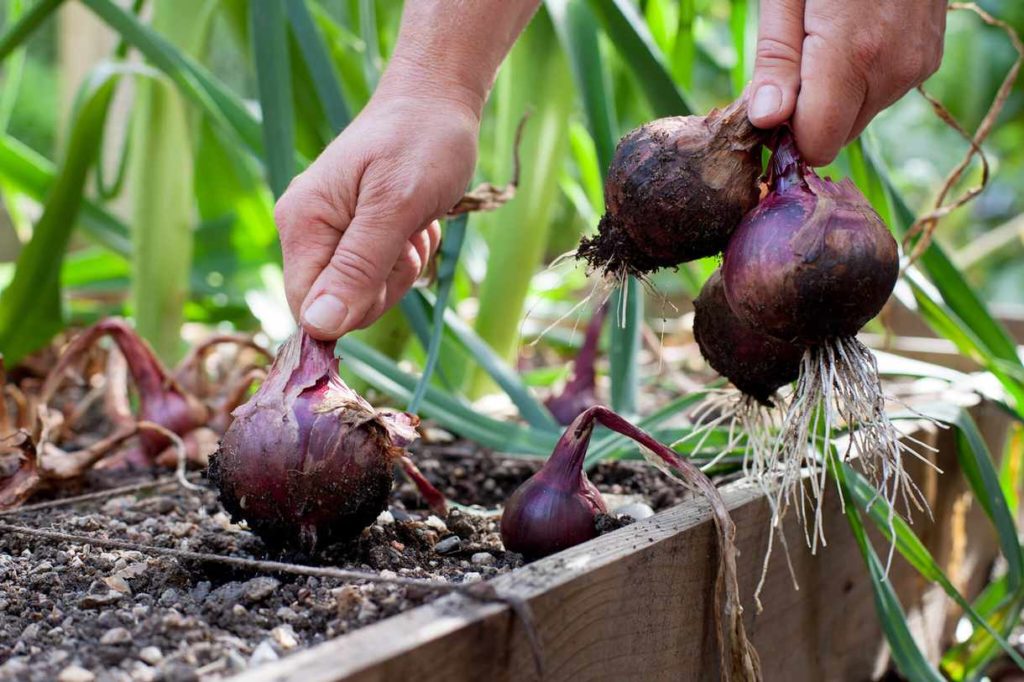
You can plant onions from sets, seeds, or transplants. Onion transplants can be purchased from your local nursery, and these are onion plants that have been planted and are now ready to be transplanted directly into your garden. Transplants will usually grow within 65 days, but they are sensitive to diseases.
Onion sets are immature bulbs that were grown the previous year, and by far the most popular choice for gardeners. This is because onion sets are easy to plant, quick to harvest, and not very susceptible to diseases. When purchasing onion sets, you'll notice that they are identified by three different “varieties”: red, white, and yellow. If you're looking to grow green onions, be sure to choose the white onion variety. Pro Tip: look for 1/2″ diameter bulbs – these are least likely to bolt.
Onion seeds offer a wide range of variety to gardeners as you can carefully pick and choose from hundreds of onion varieties. The only problem though, is that it can take up to 4 months for onions to mature. If you live in a colder climate, be sure to start onion seeds indoors and then transplant outdoors once all risk of frost has passed.
Planting Onions:
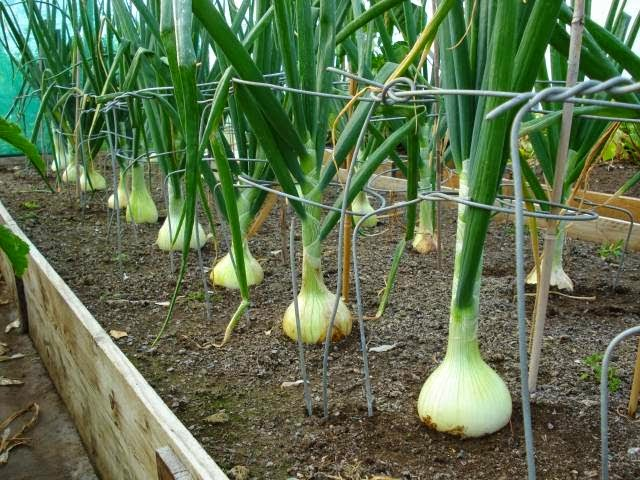
- Early on during their growth, onions will prefer cooler weather, so plant in early spring. Those that live in warmer climates, you should plant onions in the fall or winter.
- As a rule of thumb, green onion tops will grow in cooler weather, and bulbs will form in warm weather.
- Plant onion seeds 4-6 weeks before the last average frost date, indoors. Once seedlings are about 3-4 inches long, harden them off. Do this by bringing them outside for a few hours a day, and then bringing them back indoors. This will ensure that they get acclimatized to the outdoors.
- If you're planting onion seeds directly outdoors, sow them in rows and plant about 1/2 inch deep. Thin seedlings to 1 inch apart and in 4 weeks time, thin again to 6 inches apart.
- If you're planting sets or transplants, make 2 inch deep planting holes. Space each set or transplant 6 inches apart.
- Water immediately after planting.
How to Care for Onions:
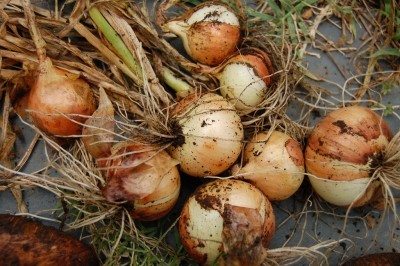
- For the best onion crops, always make sure to remove all weeds.
- Keep the soil moist by mulching around the plants.
- Give your onions at least 1 inch of water per week. If onion plants dry, the bulbs can split.
- If you use good quality soil, you shouldn't need to fertilize. If you do fertilize, use a nitrogen-based fertilizer. Side dress the growing plants in early and midsummer using about 1/2 cup of fertilizer.
Pests and Diseases:
- Generally speaking, most onion varieties are disease and pest free, but onion maggots are possible.
- To discourage onion maggots, lay a thin layer of sand around the bulbs to prevent adult flies from laying eggs.
- Smut, which is a disease, can cause swelling of the leaves. This swelling will eventually burst and spill powdery black spores on the plant.
- Downy mildew and purple mold and pink rot can also happen.
- These problems can be completely avoided by rotating the crops and working humus into the soil to encourage good drainage.
How to Harvest Onions:
- Onions are ready to harvest once the tops turn yellow.
- Use the back of a rake to turn the onions over horizontally.
- This will stop the sap from going to the stems and will divert the plant's energy into the bulb.
- Once the top turns brown (in about a day or two), dig the bulbs out and leave them to dry in the sun.
- Once the onion skin is dry, wipe off the soil and remove the tops.
- Store onions in a cool, dry place.

